- Slowing China demand sends stocks, commodities lower
- Gold falls on dollar strength
- Yields also slide
Key Events
Global stocks, US futures and commodities all sold off on Monday as investors fear a worsening virus outbreak in China may slow global economic growth and provoke the US Federal Reserve into a faster pace for interest rate hikes. Futures on the Russell 2000 led the slump this morning followed by contracts on the Dow Jones, S&P 500 and NASDAQ.
Oil slipped on worries of decreasing demand and iron ore trading in China has been volatile.
Global Financial Affairs
The further spread of the coronavirus in China—the world's second-largest economy—is severely testing the government's zero-tolerance COVID policy. It has tightened restrictions in Beijing which is exacerbating traders' concerns of lower demand compounding the current supply chain crisis.
Asian markets all closed in the red, with the Shanghai Composite plummeting 5.1%, to its lowest since June 2020.
The Chinese index fell last week, dropping below its weekly 200 MA and its uptrend line since the 2018 low.
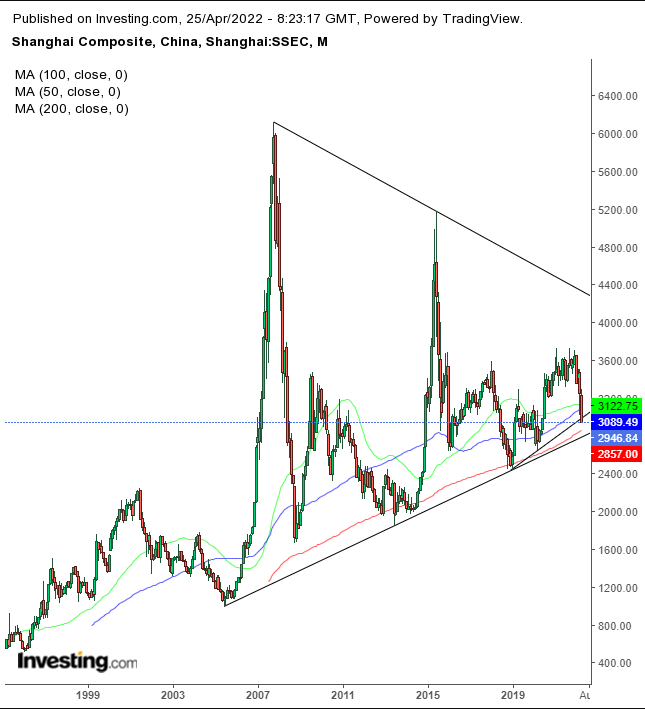
On the monthly chart, the gauge is about to test-retest the 200 MMA for the first time since 2018. The most significant moving average in the technical arsenal has reflected the macro uptrend since 1990. The price will also test the bottom of a Symmetrical Triangle since 2005. In other words, penetration of the 200 MMA and a triangle bottom could have dramatic consequences.
As previously mentioned, all four US futures contracts are trading in the red ahead of the US session open later today. Though the tech sector had been leading the selloff earlier, the small cap futures have taken on the leadership role—higher interest rates will weigh on smaller companies with fewer resources and flexibility at their disposal compared to the mega-cap multinationals.
European stocks also opened sharply lower on Monday, with the STOXX 600 benchmark reaching its lowest level in over a month. Energy and mining sectors are leading the European index lower.
The gauge is also suffering from weak technicals.
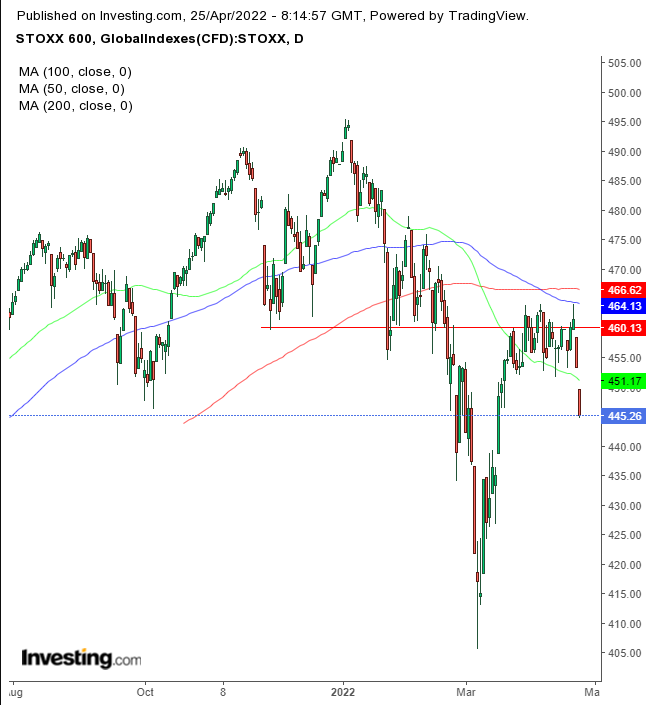
The benchmark topped out with a falling gap, skipping over the 50 DMA like it wasn't even there. This move follows the 100 DMA's crossing below the 200 DMA after the 50 DMA did the same, triggering a Death Cross for a bearish MA pattern, in which each moving average falls below a longer one. Note that the March top developed at the resistance of the November-January lows.
Yields on the 10-year Treasury note have been falling. This may support the investor view that the yield on Treasuries makes them a worthwhile investment at the current level of yield. However, we believe it's just temporary repricing and that the global supply crisis will push prices higher, rendering current yields unattractive, leading to a continued selloff in bonds which will drive yields yet higher.
And the higher the bond payout, the more equities should sell off, both because of the outlook for higher borrowing costs and the higher payout from Treasuries offering a viable alternative to stock investing.
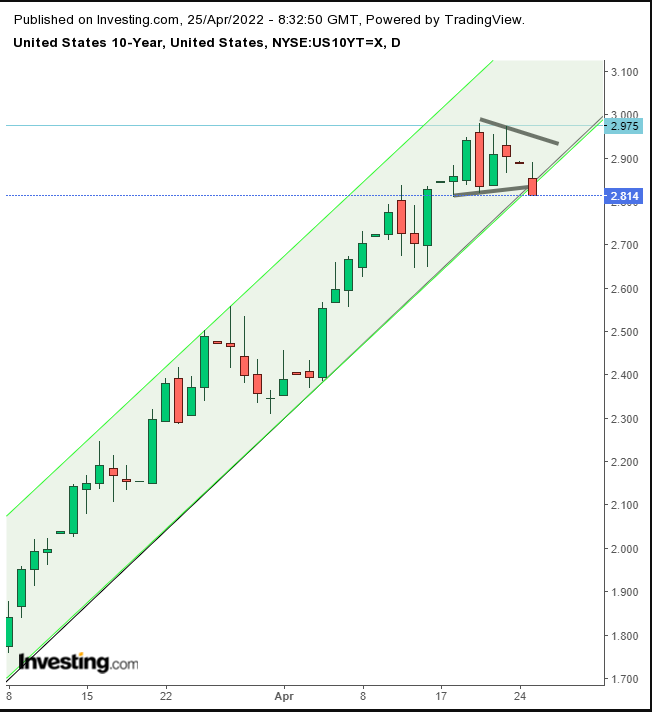
Yields are testing the bottom of a bullish pennant and the rising channel. A decisive break below would suggest increasing chances for falling rates. However, we are betting yields will find support and break the pennant's topside. Nevertheless, the current intraday downward penetration is a cause for concern.
The dollar advanced for the third day.
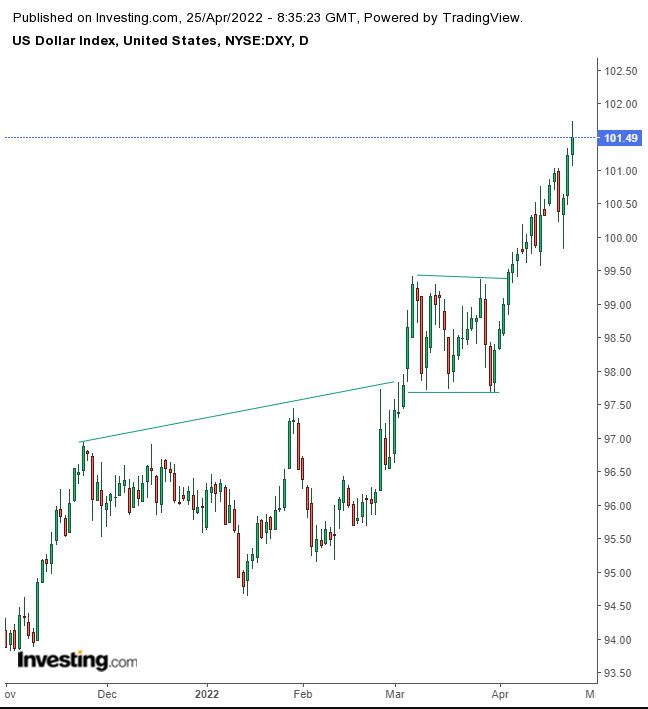
The greenback extended the breakout of a range that followed an H&S Continuation pattern.
The euro erased gains made after President Emmanuel Macron won the French election on Sunday.
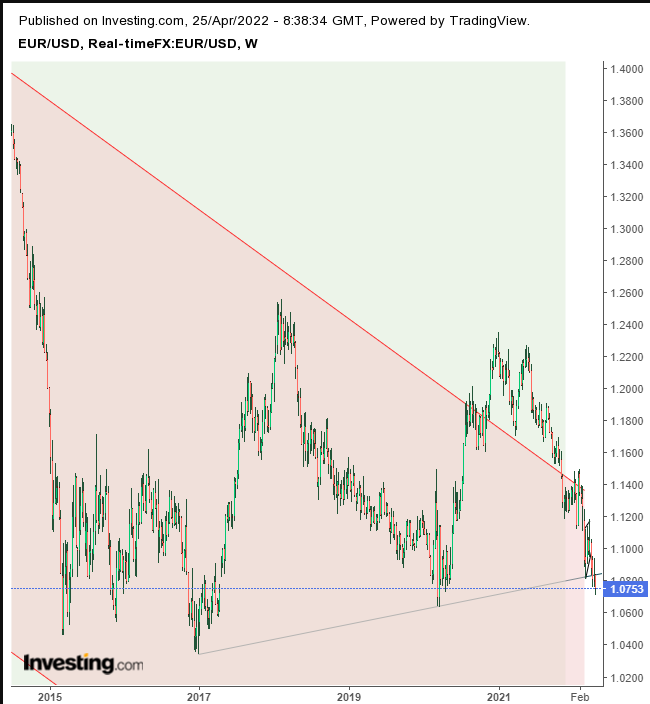
The single currency recently completed a rising wedge and is depending on the penetration of a trendline since 2016 which can be the neckline of a massive H&S continuation pattern that will push the shared currency back into a falling channel since its record peak in 2008.
Gold is falling on dollar strength.
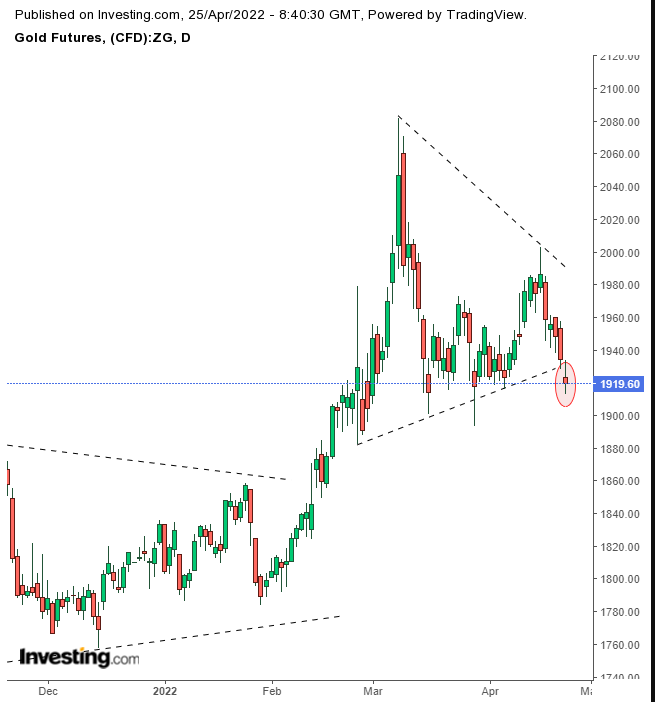
The yellow metal appears to be breaking to the downside of a Symmetrical Triangle. We await the close for confirmation. Aggressive traders may enter a long contrarian position, as the price seems to be supported by recent lows. The current pattern is in an uptrend, and bulls may argue that commodities should rise amid higher inflation. However, the downside breakout will put technicians on notice.
Bitcoin fell, extending the token's decline below $40,000.
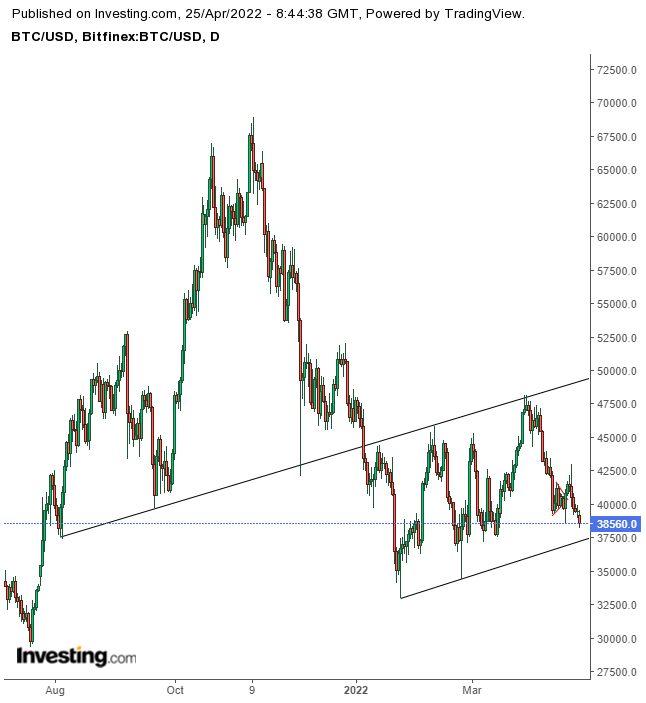
The cryptocurrency is near the bottom of its rising channel, whose top is an extension of a neckline to an H&S Continuation pattern, for which we have been waiting for a long time to push the currency below its January low.
Oil gapped down on worries of lower demand from China.
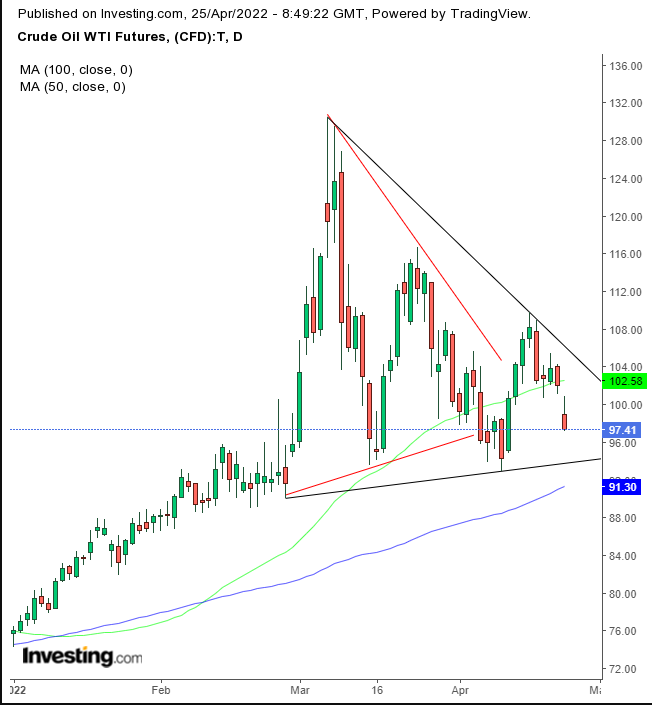
We have dismissed the current trading pattern as the price meandered through the vertex of the Symmetrical triangle we drew according to previous price moves. However, the recent peaks and troughs, contracting further since the rise between Mar. 15 and 24, suggest we should include the Feb. 11 to 18 trading as part of a pattern that has yet to complete.
Note that the 50 DMA and 100 DMA realigned with the top and bottom of the redrawn Symmetrical Triangle, perhaps underscoring the significance of the current trendlines that make up the pattern.
Up Ahead
- CB Consumer confidence figures are published on Tuesday.
- US durable goods figures are released on Tuesday.
- On Tuesday US new home sales for March are printed.
Market Moves
Stocks
- The MSCI Emerging Markets Index fell 1.04%
- The MSCI Asia Pacific Index fell 2.1%
Currencies
- The Japanese yen fell 0.3% to 128.14 per dollar
- The offshore yuan rose 1.1% to 6.5972 per dollar
- The British pound fell 0.9% to $1.2719
Bonds
Commodities
- Brent crude fell 4% to $101.77 a barrel
- Spot gold fell 0.9% to $1,914.30 an ounce
